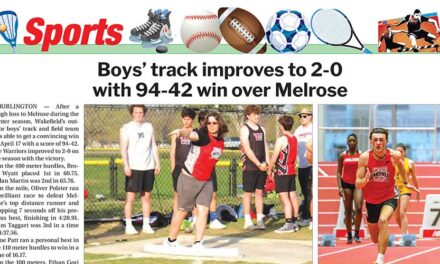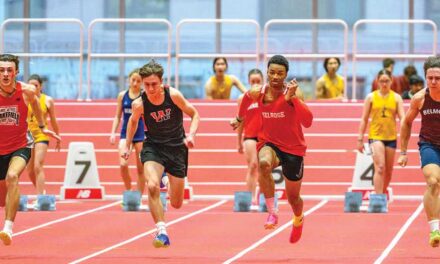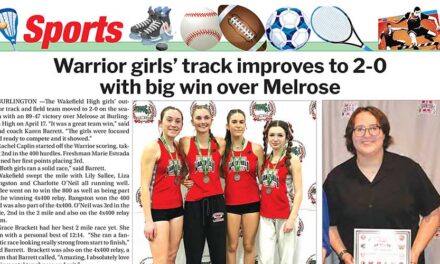Published in the November 9, 2020 edition.
By DAN PAWLOWSKI
Basketball, hockey, track, swim and gymnastics athletes all received good news from the the state on Friday as it appears their sports will be allowed to have a modified winter season this year.
The Massachusetts Office of Energy and Environmental Affairs released their Phase 3, Step 2 guidelines for organized youth and adult amateur sports activities on Friday.
The Massachusetts Interscholastic Athletic Association’s COVID-19 Task Force will review the guidelines this week and will provide guidance to MIAA Sport Committees in the creation of their sport-specific modifications for the winter season.
The Sport Committees will then present sport-specific modifications to the Sports Medicine Committee, which is also expected to happen this week. Those will be recommended to the COVID-19 Task Force which will then recommend sports to be included in the winter season to the MIAA’s Board of Directors.
The Board of Directors will then vote on the COVID-19 Task Force recommendations and approve specific sports and modifications for the winter season.
According to the EEA guidelines, all typical winter sports except for wrestling and competitive cheer will get a chance to have interscholastic competitions. Those two sports were considered Higher Risk that are performed indoors and require sustained high contact.
While wrestling and cheer won’t be permitted to have competitions this winter season, they are allowed to have individual or socially distanced group activities and modified competitive practices performed in cohorts of the same small group of individuals.
The EEA guidelines placed sports in three risk categories: Lower, Moderate and Higher.
The only typical high school winter sport that was considered Lower Risk was gymnastics. Team swimming and indoor track and field are considered Moderate Risk. Wrestling, basketball, ice-hockey and competitive cheer are considered High Risk.
Basketball and ice hockey are considered Higher Risk sports that require intermittent close proximity or moderate contact. The EEA deemed that these sports should be allowed to play with modifications. Until the MIAA announces sport-specific modifications it is hard to estimate what those might look like. Like all fall sports, face coverings will be mandatory for all winter sport participants. Many more modifications will be required.
The guidelines included indoor competition capacity limits. Two adults per participating player will be allowed to attend so long as the presence of spectators plus players, coaches, referees and facility/activity workers does not cause the facility to exceed more than 50 percent of the maximum occupancy for the indoor facility. So, it will depend on the size of the facility.
To read the full EEA guidelines visit mass.gov and search “EEA” or visit the following link:
www.mass.gov/doc/safety-standards-for-youth-and-adult-amateur-sports-activities-phase-iii-step-2-effective-11720/download
The link is posted on the Wakefield Daily Item’s sports Twitter account: @Wakeitemsports.




